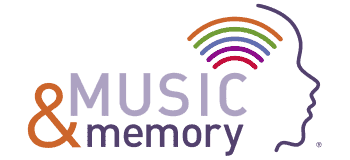Never underestimate what a group of girls can accomplish when they put their minds together—especially when it comes to devising a way for elders to easily access their personalized music on iPods.
That’s the idea behind the “iSly”—short for “It Seems Like Yesterday”—a conceptual device that uses biofeedback and an iPod or MP3 player implanted in hearing aides to trigger music. Although the iSly is an imaginary tool, the idea behind it is significant: Connect the body’s physiological responses to emotions such as anxiety to seamlessly activate the user’s personalized playlist.

The iSly concept was created by a group of six Buffalo Grove, Ill., girls, ages 9 to 11, who all love problem-solving and engineering challenges, in response to this year’s “Senior Solutions—Seniors and Technology” project charge at the First Lego League Illinois State Competition on January 18th and 19th in Arlington Heights.
Calling themselves the Fuzzy Pink Bunnies of Doom—they sport pink caps, fuchsia leg warmers and black tee-shirts with their logo, a pink bunny with an eyepatch—Piper, Evie, Kaitlyn, Lily, Reece and Clare worked with coaches to meet the two requirements for the competition: build a Lego robot that could run specified missions and create an innovative technical solution for some aspect of senior life.
The Challenge: Create a Seamless Way for
Elders to Play Music on iPods
The inspiration for iSly came when one of the girl’s mothers saw the Music & Memory episode on CBS’s The Doctors TV last September. The team was excited by the idea of helping elders struggling with Alzheimer’s and dementia to “reawaken” by listening to their personal music favorites on iPods.
As part of their project research, the team met with a senior partner, Jackie N., who is a resident at a Libertyville elder care facility, her friend Ceci and staff. They discovered that seniors don’t necessarily embrace technology and that staff members were very busy and pressed for time. So the question became, how to create a seamless way to activate the personalized playlists?
Their solution: Embed a digital music device like an iPod or MP3 player into some form of hearing aid. The user would wear a biofeedback watch, similar to what runners use to monitor heart rate, to track vital signs. If the user became agitated, for example, her heart rate and blood pressure would rise, triggering a Bluetooth signal to the MP3 player to select relaxing music that would play through the hearing aide.
The Lesson: Music is a Powerful Way for
Elders to Reconnect to the World
The team presented their concept as a skit and dance sequence set to Boogie Woogie Bugle Boy for Jackie and Ceci, to get their feedback. Their response was enthusiastic.
“The second the music started playing, Jackie and Ceci started jitterbugging in their chairs,” says Robin O’Brien, the team’s project coach. “Seeing these two come alive really drove home for the girls how impactful music can be.”
Staff, too, were intrigued by the idea and wanted to learn more about Music & Memory’s work with elder care professionals.

When it came time for the state Lego competition (they won the Technical Design Award for their robot at their regional meet in December), the team gave their five-minute iSly presentation and also ran their robot through the required missions. In addition, they distributed 100 flyers about Music & Memory to build awareness of the benefits to elders of personalized playlists.
Fuzzy Pink Bunnies of Doom placed eighteenth overall and captured the Team Spirit Award, two major accomplishments for their first-ever statewide competition. O’Brien says their iSly research, creativity and clarity of presentation were major factors in their success.
What’s next? The 2014 First Lego League challenge will be announced over the summer, and the team will be gearing up for the competition in the fall. And maybe the girls will find a way to make the iSly a reality—not a bad way to finance all those college educations.
Our thanks to Fuzzy Pink Bunnies of Doom for spreading the word about Music & Memory®, a non-profit organization that brings personalized music into the lives of the elderly or infirm through digital music technology, vastly improving quality of life.
